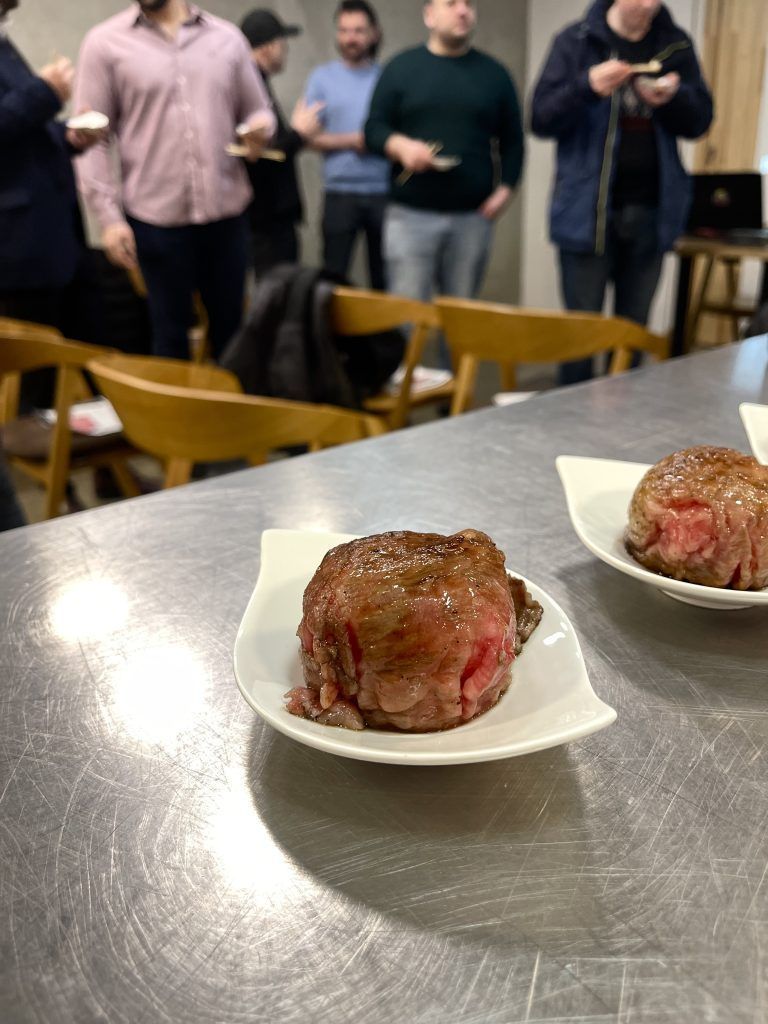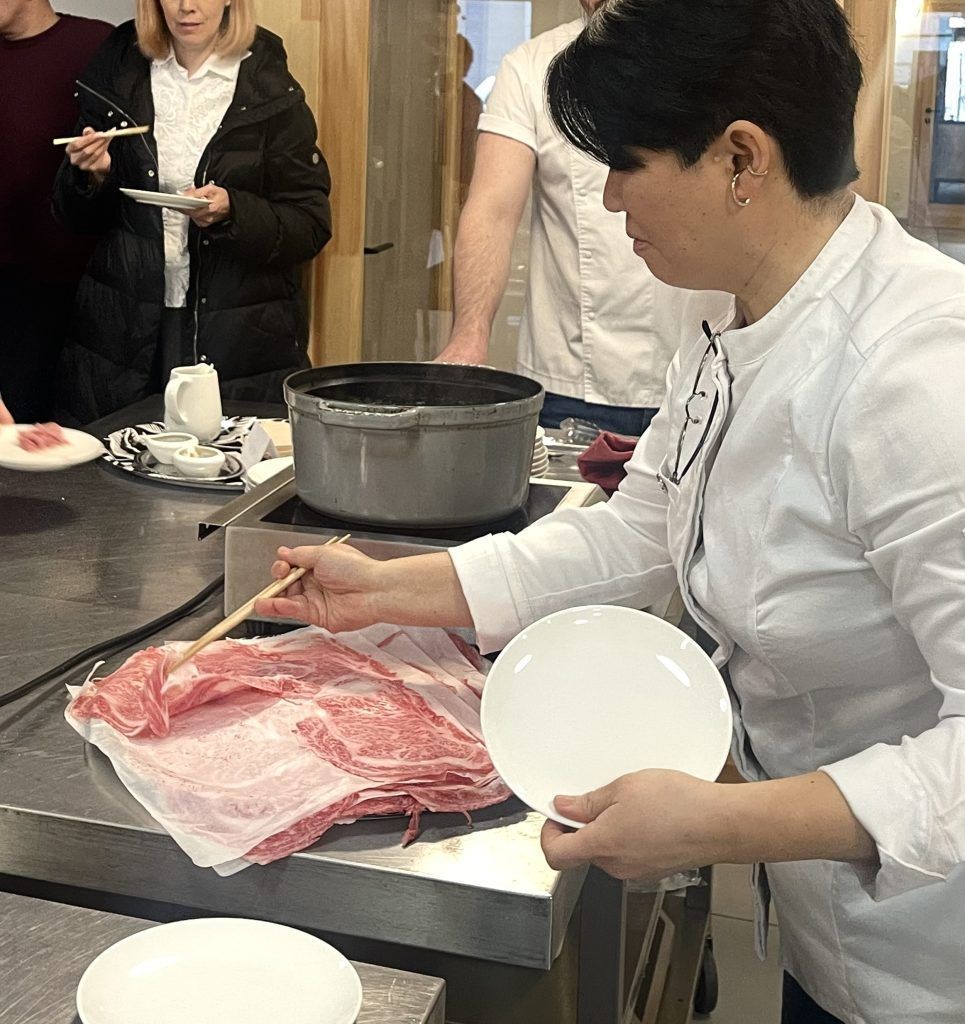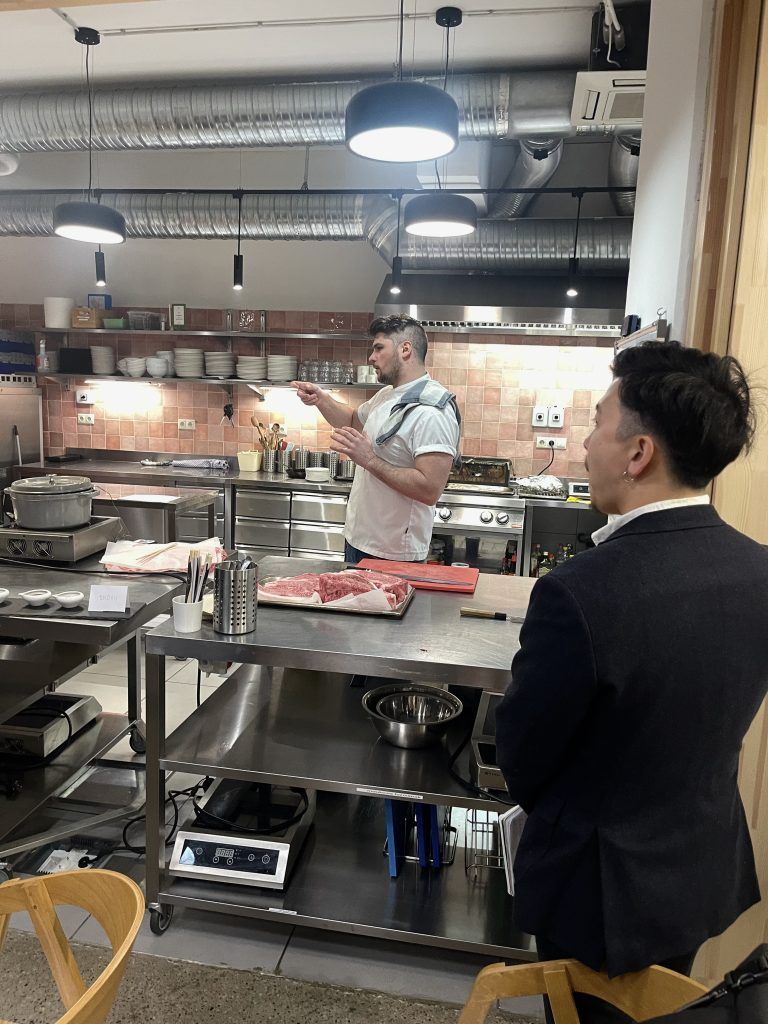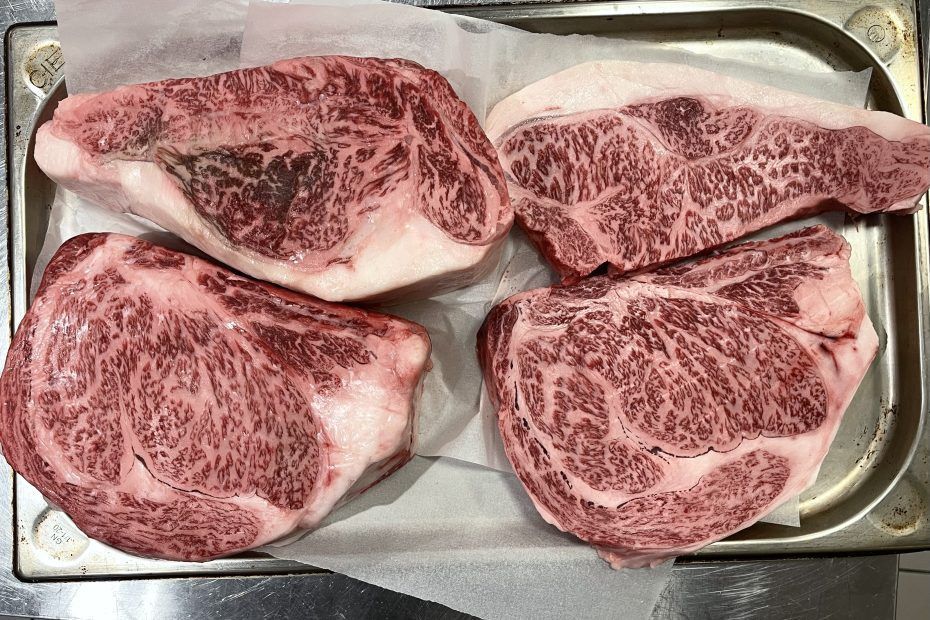On 6 March, JETRO – Japan Trade Development Organization and JFOODO organized an exclusive tasting event for representatives of the Hungarian culinary scene to get the chance to try the A5 grade, premium quality Japanese wagyu, at the Culinary Institute of Europe.

Today, you can eat wagyu in several restaurants in Hungary, but many people are not aware of where the meat comes from. The name wagyu is often used to describe meat from Australia or South America and the United States, although originally it was only used to describe the very valuable beef from Japan.
But what is so special about it that it needs to be distinguished in this way? The difference compared to other countries lies in the attention paid to the bloodline and the extremely tender meat that this results. The white fat found in wagyu meat is called ‘sashi’ and it nets the red meat in a way that resembles marble – a real pleasure to look at. Another special feature of Japanese wagyu is its low melting point: while normal beef has a melting point of 35-40 degrees Celsius, wagyu beef has a melting point of around 17 degrees Celsius, which means that it melts in your mouth when raw. Wagyu beef also contains high levels of fatty acids, half of which are oleic acid. The ratio of oleic acid to unsaturated fatty acids is higher than that of saturated fatty acids, so even though the meat is fatty, it is a quality fat that has no negative effects on human health.

The import of Japanese wagyu beef to Europe started in 2014 and after an initial 50 tonnes, last year they imported quantity reached almost 450 tonnes. Despite this, this exceptional meat is not yet available to the catering industry or consumers in Hungary, so the aim of the event was to introduce and promote Japanese wagyu to the professional community.
After a short presentation about the history and features of the Japanese wagyu meat, the most exciting part took place: the guests could taste the meat prepared in different ways. The meat was prepared in three different ways by the chefs of Culinary Institute of Europe, but it’s important to highlight, in none of the cases was the meat seasoned in advance to allow the flavour to come out during the tasting. However salt, pepper, wasabi and soy sauce was provided, therefore the participants could season the meat according to their own taste afterwards.

First, a classic steak was served to the guests, the speciality of which, apart from the lack of seasoning, was that the first cooking on the grill was followed by resting, and then before cutting, the meat was put on the grill for a moment to get a crispy crust. Then came the traditional Japanese wagyu onigiri, where the meat was rolled in unsalted rice and a little soy sauce was added. Finally, the chefs and gastronomes present were introduced to an exciting Japanese technique: shabu-shabu. The speciality of this dish is that it is prepared in the classic way with a base of seaweed and bonito flakes, in which the meat is then dipped. However, the meat should not be soaked in this broth! It is very important, firstly, that the temperature of the liquid should not exceed 60-80 °C and that the thinly sliced meat should be dipped in it twice, just barely.
Although these traditional Japanese methods were very interesting and unusual for the audience, this is Europe, so the organisers asked Adam Mede, chef of Laurel restaurant, to demonstrate how he would work with the meat. This was not a challenge for the chef, who is familiar with Asian cuisine and the restaurant also serves wagyu, so he demonstrated to the other professionals how the meat is served at Laurel: finely sliced steak, slightly grilled.
The hour and a half event left the participants with a wealth of new experiences. We hope that in the near future the wider public will be able to taste this exceptional culinary delicacy in Hungary as well.


